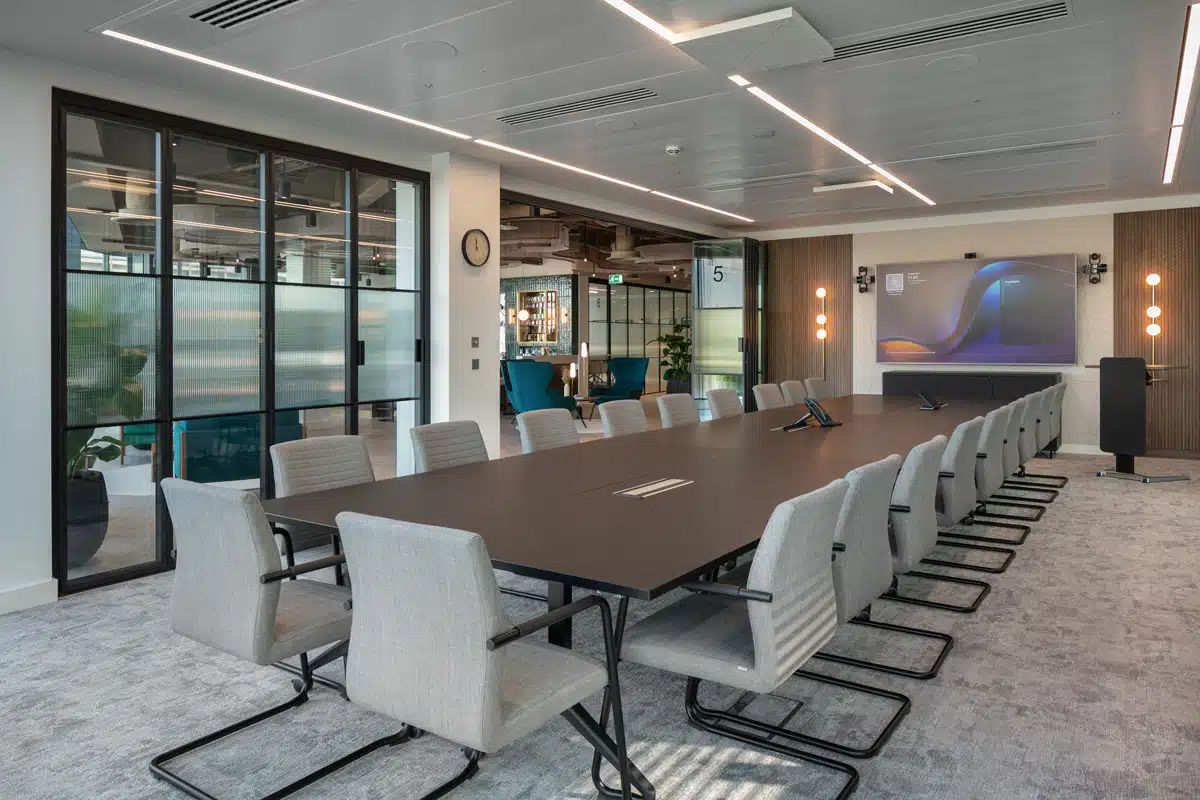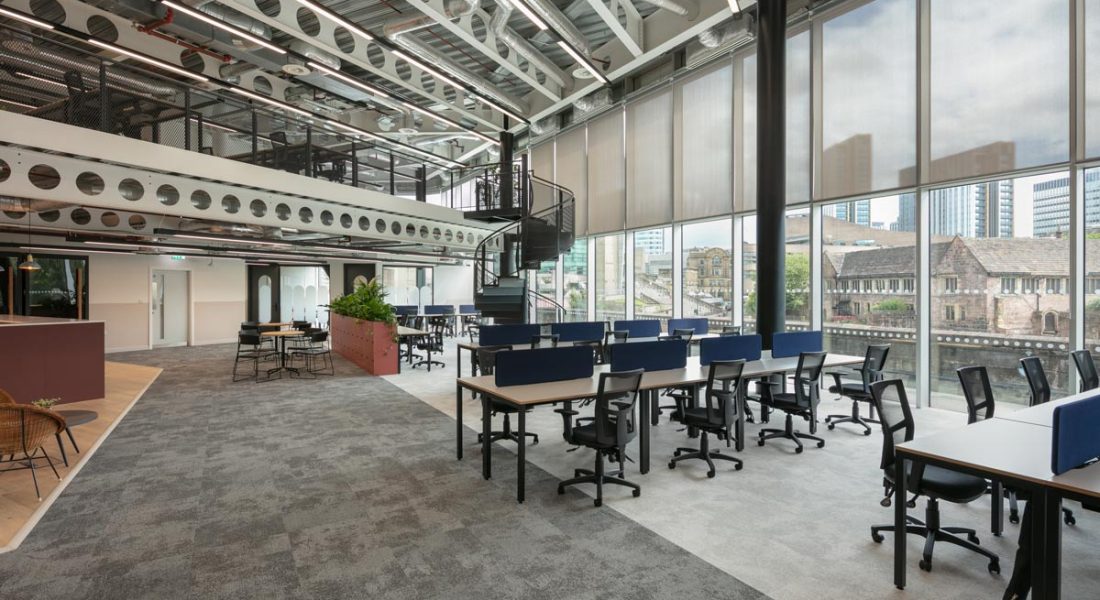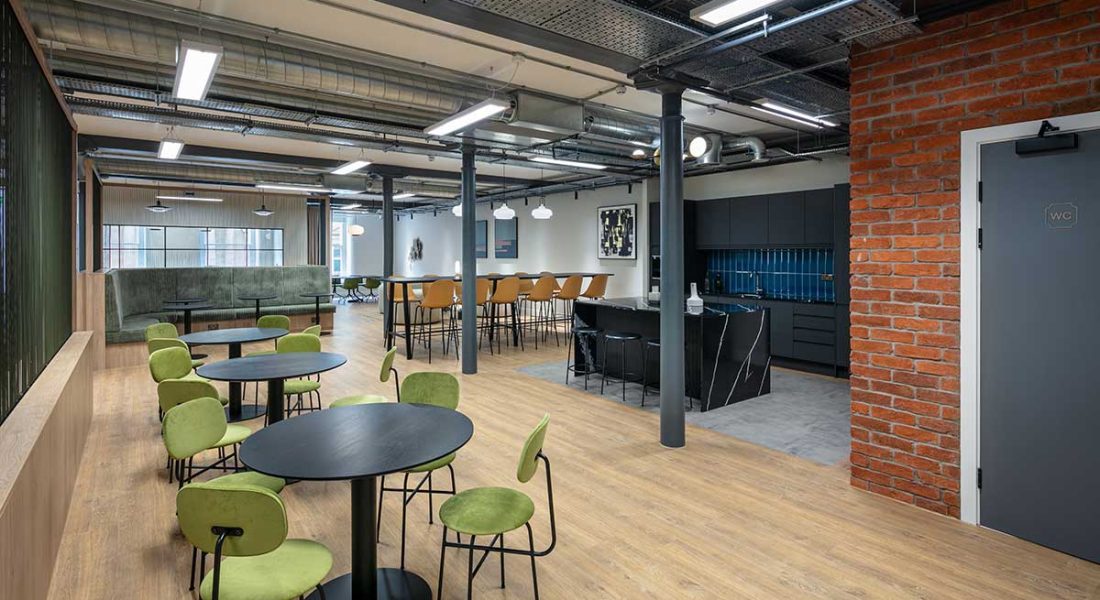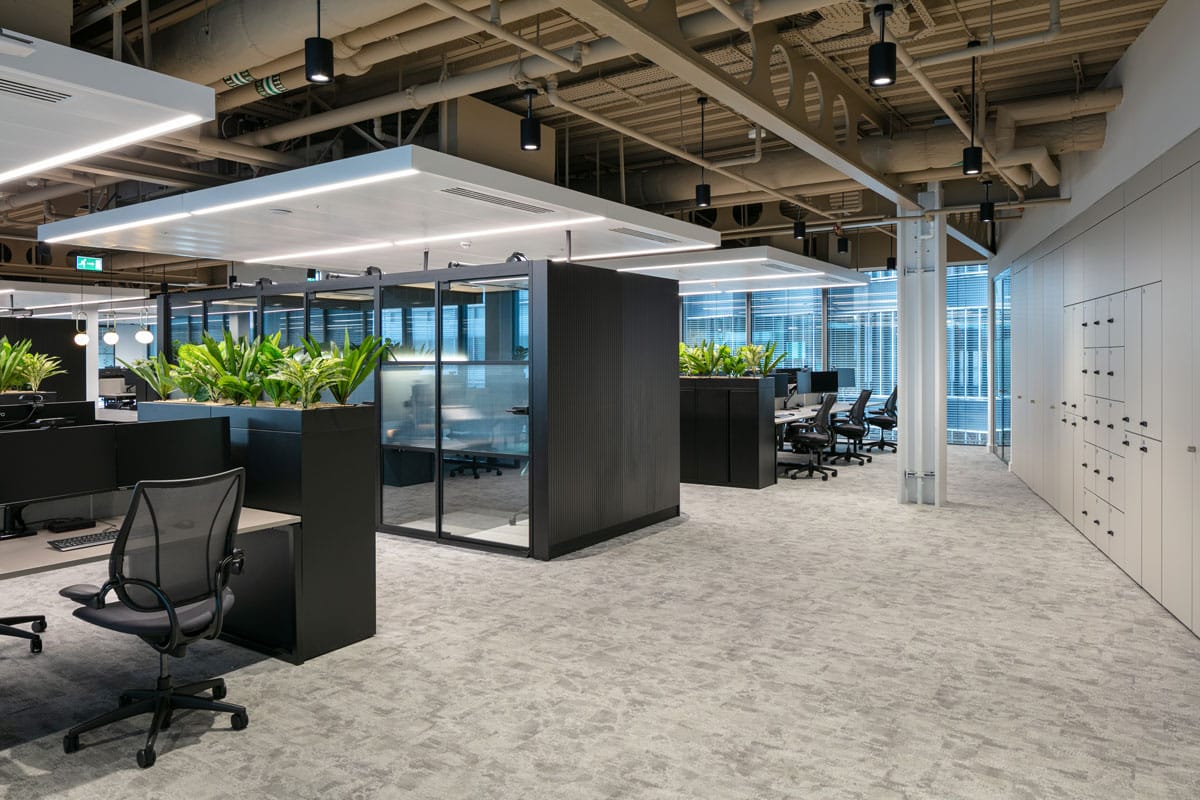Artificial Intelligence (AI) is already influencing how businesses operate—and its impact on office design is growing rapidly. From layout optimisation and space management to improving employee wellbeing, AI-driven insights are reshaping the modern workplace.
In this article, we explore how AI is being used in office design today, why it matters, and what businesses should consider when adopting AI-led solutions.
Understanding AI in the Office Environment
AI in the workplace typically refers to the use of smart systems and machine learning to gather and analyse data, automate tasks, and support decision-making. In office design, AI goes beyond technology trends—it actively contributes to creating more responsive, efficient, and productive environments.
For instance, AI sensors can track occupancy patterns, monitor environmental conditions like temperature or lighting, and even learn user preferences to automatically adjust settings. These real-time insights help create spaces that support how teams actually work, not just how they are expected to.
Designing for Flexibility and Hybrid Work
The rise of hybrid and remote working has pushed flexibility to the forefront of office design. AI tools can analyse desk usage, meeting room bookings, and employee movement to understand how space is being used. This data helps workplace strategists and designers adjust layouts for greater efficiency.
For example, if AI identifies low usage in fixed desk areas but high demand in collaborative zones, design changes can be made to create more shared spaces or hot-desking options. Over time, this leads to smarter layouts and better space utilisation—without guesswork.
Enhancing Wellbeing Through Smart Environments
A well-designed office should support both productivity and wellbeing. AI plays a key role in this, offering ways to monitor and maintain healthy workplace conditions. Smart lighting systems adjust brightness and colour temperature based on the time of day, reducing eye strain. Air quality sensors can trigger ventilation or alerts if CO2 levels rise too high.
In some cases, AI also supports touchless technology, helping maintain hygiene by enabling gesture-controlled doors or voice-activated meeting systems. These innovations not only promote health and comfort but also show a commitment to modern, employee-focused design.
Real-Time Adaptability and Predictive Planning
Unlike traditional design approaches, AI allows spaces to evolve in real time. Systems integrated with Internet of Things (IoT) devices can adapt as needs change—whether that is closing off unused areas to save energy or reallocating desks to manage busy periods.
Moreover, AI offers predictive insights. It can anticipate future space needs by analysing historical trends, seasonal fluctuations, or expected growth. This enables businesses to plan with confidence, avoiding both underused real estate and cramped conditions.
AI and Sustainability in the Workspace
Sustainability is at the heart of modern office design, and AI helps support these goals. Energy use can be automatically reduced when rooms are empty. Heating, cooling, and lighting are optimised in real time. Some AI systems even provide sustainability dashboards, giving teams visibility on environmental impact.
These tools not only help lower energy bills but also contribute to achieving green building certifications such as BREEAM. By using AI to monitor and reduce resource consumption, businesses can demonstrate clear action towards net zero targets.
Considerations Before Implementing AI in Office Design
While the benefits are clear, it is important to implement AI thoughtfully. Consider the following before introducing AI-led systems:
- Privacy and Data Ethics: Ensure that any tracking or data collection respects employee privacy and complies with regulations such as GDPR.
- Integration: AI should work seamlessly with existing systems, from booking tools to HVAC controls.
- Scalability: Choose systems that can grow with your business or adapt as your workspace evolves.
- User Training: Technology is only effective if teams understand how to use it. Invest in onboarding and support.
Partnering with a workspace specialist who understands both design and technology is essential to maximising value.
Final Thoughts
AI is not a distant concept—it is already transforming how offices are designed and used. By integrating AI into the workplace, businesses can create intelligent, adaptive environments that respond to employee needs, support wellbeing, and optimise performance.
At ADT Workplace, we understand the importance of forward-thinking office design. Our team helps businesses create spaces that not only look great but also perform intelligently.
Ready to future-proof your workspace? Get in touch with us today to explore how AI-driven design can support your team.








